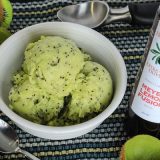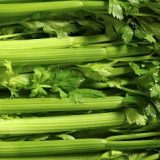Haden you better try it?
What do the Irish potato famine and phylloxera which nearly wiped out the French wine industry have in common? Both were cases of severe agricultural disasters whose ruinous impact could have been reduced by improved crop diversity. What does this have to do with mangos?
Currently there are hundreds, and some say thousands varieties of mangos, about five of which are more commonly available in the United States. Of these five the most prominent is the least flavorful. When planting is geared only to maximize production and profit, it is the loss of the consumer and in extreme situations can result in dangerous situations.
Modern experts believe that some of the disastrous impact of the potato blight could have been avoided if the Irish had had more crop diversity (some strains of potatoes are immune to the blight). Just as the old adage advises not to put all of your eggs in one basket; don’t put all of your faith in one crop especially not one strain of it.
Five different mangos offer five different flavors and textures; each type comes with its own distinct advantages. This variety also extends the growing season, making high quality mangos available from April to September. Savvy shoppers will purchase mangos based on seasonal selection. Right now the time is ripe for Hadens.
Neat freaks will hate the Haden. This is a fruit for people who like to eat their fruit standing over the sink, dribbling juices down their chin and fingers slick and with syrupy juices. Gold and crimson battle for dominance on the surface skin, but reach a compromise of deep golden apricot in the interior flesh. Although Hadens can have a stringy texture, a properly ripened Haden will be so soft that it will practically slip down your throat unaided. As it goes you will be struck by its intense sweet and aromatic flavors. Many have likened the flavor of the mango to a combination of peach and apricot. A tree ripened Haden surpasses both of these in flavor intensity and syrupy juices. With its abundant juices Haden mangos are wonderful for making sorbet or salsa.
Tommy Atkins on the other hand is the most popular mango available in the United States. More show than substance, the Tommy Atkins mango looks pretty similar to the Haden; it has that same mottled skin with a bright rosy red hue. Underneath, is a firm, dense flesh that makes up for in resilience what it lacks in flavor. Not necessarily a poor choice for salads where the firm texture and clean cubes might be appreciated, the Tommy Atkins nevertheless will most likely prove disappointing to those who seek mangos exotic flavor.
Mangos are particularly popular in Thai and Indian cooking as well as in Asian fusion and Pacific Rim cuisine. They pair wonderfully with chili and with seafood and show up in menus from places as diverse as the Indian inspired Mantra in Palo Alto that serves seared scallops with mango and cumin red pepper relish to the Cuban La Bodeguita del Medio also in Palo Alto where they a served in a salsa alongside fish tortillas
Unless you want to use under ripe mangos (ideal for chutney and some South East Asian salads) it is best to shop at a store that will let you taste the mangos before purchasing. Base your purchase on flavor. For Haden mangos make sure you select those where the golden or red colors predominate over the green. Once you get home let the mango ripen until ready at room temperature, it will yield to slight pressure when ripe. Once ripe it is best to use it quickly but it can be stored in the refrigerator for a few days. If you can wait that long.










